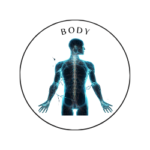 Mind
Mind
- Digital and Modern Well-being
- Mental Health and Emotional Well-being
- Mind-Body Connection and Holistic Health
- Parenting and Family
- Personal Growth and Development
- Relationships and Social Well-being
- Stress and Relaxation
- Therapeutic and Creative Practices
- Trauma and Recovery
- Work, Productivity, and Discipline
 Body
Body
 Fitness
Fitness
 Food
Food
 Beauty
Beauty
Breathwork for Stress Relief

A Simple, Science-Backed Solution for Busy Professionals
Stress is an unavoidable part of modern life. For busy professionals juggling deadlines, meetings, and personal responsibilities, chronic stress can feel like a constant companion. It disrupts sleep, clouds focus, and even impacts physical health. But what if there was a simple, effective tool you could use anytime, anywhere to calm your mind and regain control? Enter breathwork—a powerful, evidence-based practice that taps into your body’s natural ability to relax and reset.
Breathwork is more than just taking deep breaths. It’s a deliberate practice of controlling your breathing patterns to influence your nervous system, reduce stress, and improve mental clarity. The best part? It’s free, requires no equipment, and can be done in as little as 1-5 minutes. Whether you’re at your desk, in your car, or winding down at home, breathwork is a game-changer for stress relief.
In this article, we’ll explore:
3 beginner-friendly breathwork techniques to try today.
The science behind breathwork and how it calms your nervous system.
Answers to common questions like “Can I do breathwork at my desk?”
Extras like free resources, product recommendations, and interactive challenges to help you get started.
Let’s dive in and discover how breathwork can transform your stress levels and overall well-being.
Why Breathwork Works: The Science of Calm
Before we get into the techniques, let’s talk about why breathwork is so effective. When you’re stressed, your body activates the sympathetic nervous system (aka “fight or flight” mode). This triggers a cascade of physiological responses, like increased heart rate and shallow breathing.
Breathwork works by activating the parasympathetic nervous system (aka “rest and digest” mode). By slowing and deepening your breath, you signal to your body that it’s safe to relax. This reduces cortisol levels, lowers blood pressure, and promotes a sense of calm.
Dr. Andrew Weil, a pioneer in integrative medicine, explains:
“Breathing is the only bodily function that we do both voluntarily and involuntarily. This means we can use our breath to influence our nervous system and emotional state.”
Studies back this up. Research published in Frontiers in Psychology found that breathwork significantly reduces stress and anxiety, while improving focus and emotional regulation.
3 Beginner-Friendly Breathwork Techniques
Ready to try breathwork? Here are three simple techniques to get started. Each one takes just a few minutes and can be done anywhere.
1. Box Breathing (4-4-4-4)
Box breathing is a favorite among athletes, CEOs, and Navy SEALs for its ability to enhance focus and calm the mind.
How to do it:
Sit comfortably with your feet flat on the floor.
Inhale through your nose for 4 seconds.
Hold your breath for 4 seconds.
Exhale through your mouth for 4 seconds.
Hold your breath for 4 seconds.
Repeat for 3-5 rounds.
Pro Tip: Visualize tracing a box as you breathe—up one side for the inhale, across the top for the hold, down the other side for the exhale, and across the bottom for the final hold.
2. 4-7-8 Breathing (Relaxing Breath)
Developed by Dr. Andrew Weil, this technique is perfect for calming anxiety or preparing for sleep.
How to do it:
Place the tip of your tongue against the ridge behind your upper front teeth.
Exhale completely through your mouth, making a “whoosh” sound.
Close your mouth and inhale quietly through your nose for 4 seconds.
Hold your breath for 7 seconds.
Exhale through your mouth for 8 seconds, making the “whoosh” sound again.
Repeat for 4 cycles.
Visual Aid: Imagine a wave rising for 4 seconds, cresting for 7 seconds, and gently falling for 8 seconds.
3. Diaphragmatic Breathing (Belly Breathing)
This technique engages your diaphragm, promoting deeper relaxation and better oxygen flow.
How to do it:
Sit or lie down in a comfortable position.
Place one hand on your chest and the other on your belly.
Inhale deeply through your nose, allowing your belly to rise (your chest should stay relatively still).
Exhale slowly through your mouth, feeling your belly fall.
Repeat for 5-10 breaths.
Pro Tip: Practice this technique for 5 minutes daily to train your body to breathe more efficiently.
Common Questions About Breathwork
Can I do breathwork at my desk?
Absolutely! Breathwork is discreet and can be done anywhere. Try box breathing or diaphragmatic breathing while seated at your desk.
What if I feel lightheaded during breathwork?
Lightheadedness can happen if you’re new to breathwork or breathing too quickly. If this occurs, pause and return to your normal breathing. Start with shorter sessions and gradually increase as you build tolerance.
How often should I practice breathwork?
Even 1-2 minutes daily can make a difference. For best results, aim for 5-10 minutes daily or whenever you feel stressed.
Conclusion: Take a Deep Breath and Start Today
Stress doesn’t have to control your life. With breathwork, you have a powerful tool to calm your mind, boost your focus, and improve your overall well-being—all in just a few minutes a day.
Start with one of the techniques above, like box breathing or the 4-7-8 method, and notice how you feel. Remember, consistency is key. The more you practice, the more benefits you’ll experience.
Ready to dive deeper? Download our free guide, join our webinar, or explore our recommended apps to take your breathwork practice to the next level. Your journey to a calmer, more centered life starts with a single breath.
